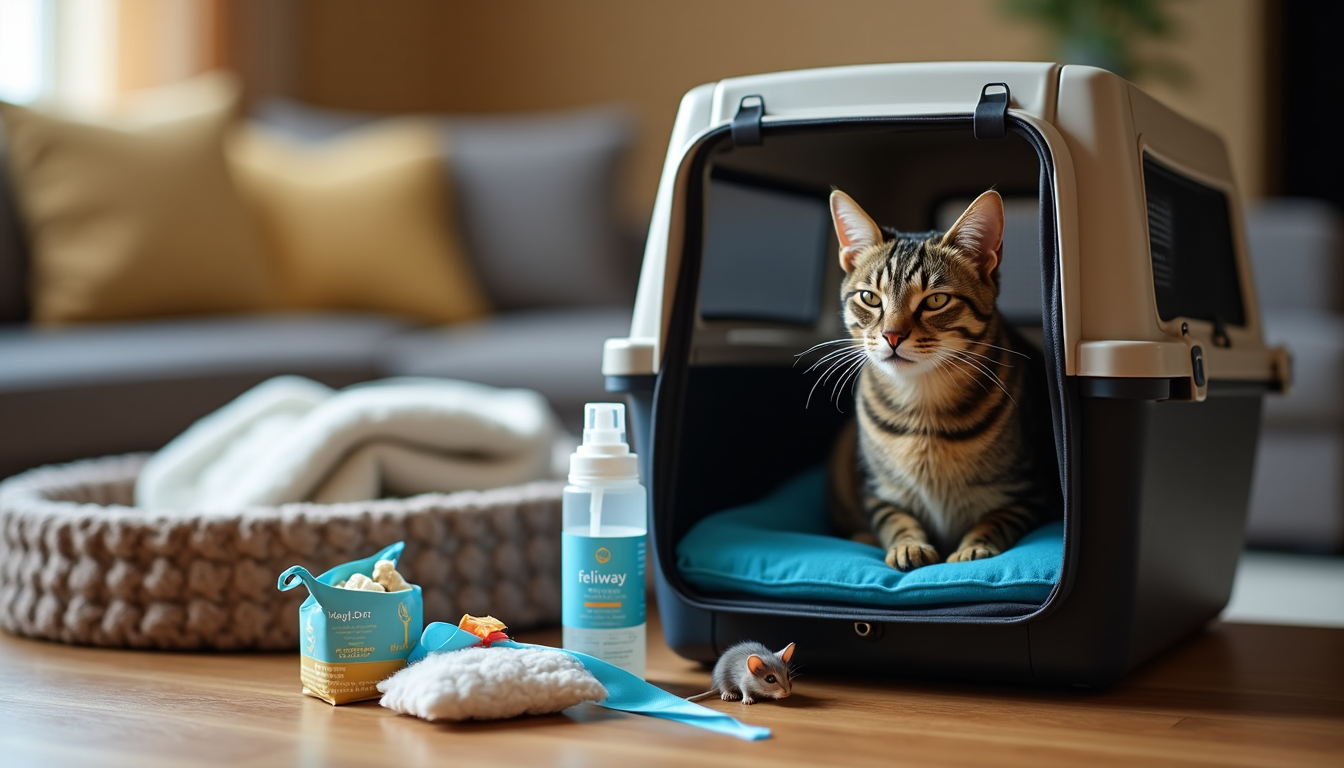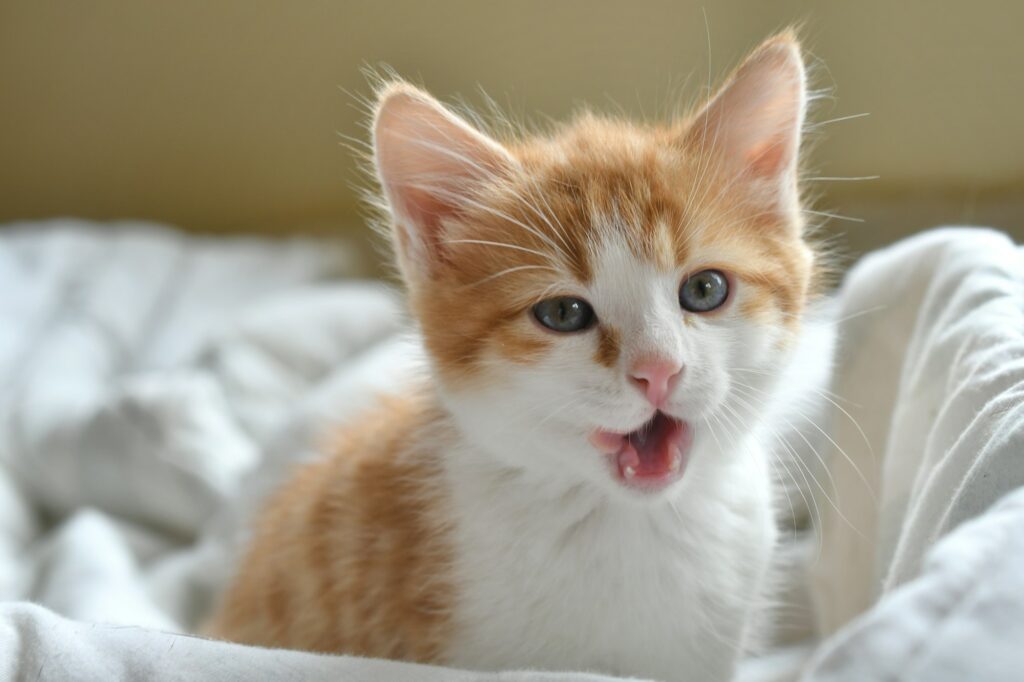Pet owners in America have changed their perspective dramatically. More than half of them now treat their pets like human family members. The number of people who want to travel with their furry friends keeps growing steadily.
Traveling with cats creates lasting memories but brings its own set of challenges. Your feline friend might deal with fear, anxiety, and stress during trips – just like humans do. The good news is that you don’t need to struggle with keeping your cat calm while traveling. This applies to both quick car rides and international flights that need vaccines and health certificates.
We created this complete guide to help you handle your cat’s travel anxiety better. Our proven tips cover everything from carrier training to effective calming methods. These techniques will keep your feline companion relaxed throughout the trip. Let us show you how to make travel enjoyable for both you and your cat.
Understanding Your Cat's Travel Anxiety
Cats show stress through behavior changes that many owners mistake for “acting out.” Your ability to spot these signs early helps you calm your cat during travel.
Signs your cat is experiencing travel stress
Your cat’s travel anxiety isn’t always easy to spot. Your feline friend might show several behaviors that signal distress. These include excessive vocalization like loud meowing or howling, restlessness, and excessive lip licking. Physical symptoms often come along with these changes. You might notice heavy drooling, vomiting, diarrhea, and even panting (a clear sign of stress in cats).
Some cats deal with travel stress through defensive behaviors. They might hide or turn aggressive—hissing, scratching, or biting anyone who comes near. Other cats completely freeze or show dilated pupils and flattened ears. These signs before, during, or after travel point to anxiety rather than simple motion sickness, which usually stops once the movement ends.
Why cats get anxious during travel
Cats thrive on stability and security in their environment. Their territorial nature makes them crave routine so much that even small changes can stress them out. Most cats don’t share our love for new experiences. They hate leaving familiar places, especially if they can’t control where they’re going or how they get there.
The small space, strange motion, and overwhelming sensory input in a moving vehicle create perfect anxiety triggers. Strange smells, sounds, and sensations can overwhelm even the most adaptable cats. Car travel disrupts their carefully structured world in ways that many cats find deeply unsettling.
How anxiety affects your cat's health
Travel anxiety does more than make the trip unpleasant—it can seriously impact your cat’s health. Cats under constant stress risk developing urinary tract, digestive, skin, and heart problems.
Stress takes a heavy physical toll on felines. It can trigger Feline Lower Urinary Tract Disease (FLUTD) and even Upper Respiratory Infections (URIs). Stress-related inflammation directly affects your cat’s digestive system and often leads to vomiting and diarrhea.
Long-term stress changes your cat’s overall behavior and wellbeing. Stressed cats often eat less, groom less, and play less. Without treatment, anxiety can get worse and lead to permanent behavioral changes that reduce your cat’s quality of life. This connection between anxiety and physical health makes finding the right calming medication crucial for your cat’s travel comfort and overall wellbeing.
Preparing Your Cat for Travel Success
Your cat’s travel success starts well before you leave. A well-prepared cat feels nowhere near as anxious, making the experience better for everyone.
Carrier training techniques
Your cat needs to feel at ease with their carrier to travel stress-free. First, keep the carrier in a busy area of your home with an open or removed door. This helps your cat view it as part of their space rather than a sign of stress.
- Start by placing soft, familiar bedding inside the carrier
- Add some of your cat’s favorite toys or a piece of your clothing
- Use Feliway® pheromone spray in the carrier to lower anxiety
- Place treats or feed regular meals near or inside the carrier
You shouldn’t force your cat inside. Let them explore and link the carrier with good experiences.
Practice sessions before the big day
When your cat enters the carrier freely, you can start exposing them to travel conditions. Start with closing the door for a few seconds and give treats right after. You can slowly increase the closed-door time.
Next, move the closed carrier around your home before putting it in your parked car. Start the engine briefly without moving, head back inside and reward your cat. You can then try short drives around the block before going on longer trips.
Creating positive associations with travel
Positive reinforcement remains your best tool to help cats stay calm during travel. Cats respond really well to reward-based training, despite what many people think about training them.
Keep the carrier as a permanent part of your home instead of bringing it out only before trips. This stops your cat from developing bad associations. You might want to try calming treats during practice sessions to help reduce anxiety.
Your cat can learn to travel comfortably with consistent, positive experiences. Note that a relaxed cat means an easier trip for everyone.
Effective Calming Medication for Cats for Travel
Behavioral techniques alone don’t help many cats manage their travel anxiety. Medication offers meaningful relief and makes the experience less traumatic for both you and your feline friend.
Prescription options from your veterinarian
Your vet can prescribe several medications that calm cats during travel:
Gabapentin ranks among the top choices for mild to moderate travel anxiety. This versatile medication starts working within 1-2 hours, lasts 4-8 hours, and causes minimal side effects. Your cat will generally tolerate its mild sedative properties well.
Trazodone boosts serotonin levels in your cat’s central nervous system. It works especially well for cats with high travel stress. The effects kick in within 60–90 minutes and last about 8-12 hours.
The FDA has approved Bonqat (pregabalin) to ease acute anxiety during transportation. Give it about 1.5 hours before traveling. Studies show that Bonqat helped more than half the cats respond well during both transportation and vet visits, while only one-third of cats given placebo showed improvement.
Alprazolam (Xanax) belongs to the benzodiazepine family and starts working within 30 minutes. It enhances GABA activity in the brain and creates a calming effect that lasts 8-12 hours.
Over-the-counter solutions
These non-prescription options help cats with milder travel anxiety:
Bach Rescue Remedy Pet combines five flowers in an alcohol-free formula that helps reduce stress before car rides.
Products with L-theanine (like Anxitane) work best when started 12 hours before travel, with another dose two hours before departure.
Zylkene contains milk-derived casein and starts working within 1-2 days. You can use it as both a short and long-term anxiety management solution.
When to consider medication
Your cat might need medication if they show persistent signs of travel distress even after carrier training and natural calming methods. Watch for signs like excessive vocalization, drooling, panting, or unusual behavior during travel.
Talk to your vet before giving any medication. They’ll check your cat’s overall health, age, weight, and existing medical conditions to suggest the safest option.
Prescription medications work best for healthy animals. Don’t give sedatives if you have concerns about your cat’s health, even if they were prescribed before.
Natural Methods for Calming Cats Down for Travel
Pet parents often look for natural ways to keep their cats calm during travel. These gentle alternatives work well, especially for cats with mild to moderate anxiety, and they don’t have the side effects that sometimes come with medications.
Calming treats for cats for travel
Natural calming treats work through ingredients that help cats relax. The best treats contain:
- L-theanine – studies show it helps ease stress in cats within 15 days
- L-tryptophan – helps cats make more soothing serotonin
- Thiamine (Vitamin B1) – relaxes the central nervous system
- α-casozepine – a milk protein that reduces anxiety like benzodiazepines
Products like NaturVet Quiet Moments blend melatonin with tryptophan. Give these treats about 30 minutes before stressful situations. You can also try treats with chamomile, valerian root, and passionflower to ease anxiety and help your cat sleep better.
Pheromone products that reduce anxiety
Synthetic pheromones work by copying the natural signals cats make at the time they feel safe. Feliway stands out as one of the most researched options. It copies cat’s facial pheromones that signal safety.
To help with travel:
- Spray Feliway in the carrier 10-15 minutes before you leave
- Cover the carrier with Feliway-treated towels, but leave one side open so your cat can hide while seeing less
- Pheromone wipes work great directly on carrier surfaces
Pheromone-infused calming collars are a great way to get continuous anxiety relief throughout your cat’s experience.
Comfort items from home
Your cat feels secure with familiar items in new places. Put their favorite bedding with home scents in the carrier to create a safe space. On top of that, it helps to add something with your scent, which makes them feel more secure.
The Thundershirt offers another solution – it wraps around your cat like a baby’s swaddle to reduce anxiety. Playing cat-specific classical music or purring sounds creates a peaceful environment.
These natural methods, combined with good preparation, help cats feel much less stressed during travel without needing medication.
Conclusion
Cats need the right mix of preparation, understanding, and calming solutions to travel successfully. Their owners often miss or misunderstand the obvious signs of travel anxiety that most cats display.
Stress-free cat travel depends on proper preparation as its life-blood. Anxiety levels can substantially decrease by starting with carrier training and building positive associations. Some cats do well with natural solutions like calming treats and pheromone products. Other cats might need prescription medications to stay comfortable during travel.
Note that cats react differently to various calming methods. We suggest testing different approaches during practice sessions before the actual travel. A veterinarian’s consultation will help determine your cat’s most suitable combination of techniques.
Your cat can become a confident traveler with time, patience, and consistency. Most cats learn to handle travel situations with minimal stress after these strategies take effect. This makes the experience enjoyable for both pets and their owners.

